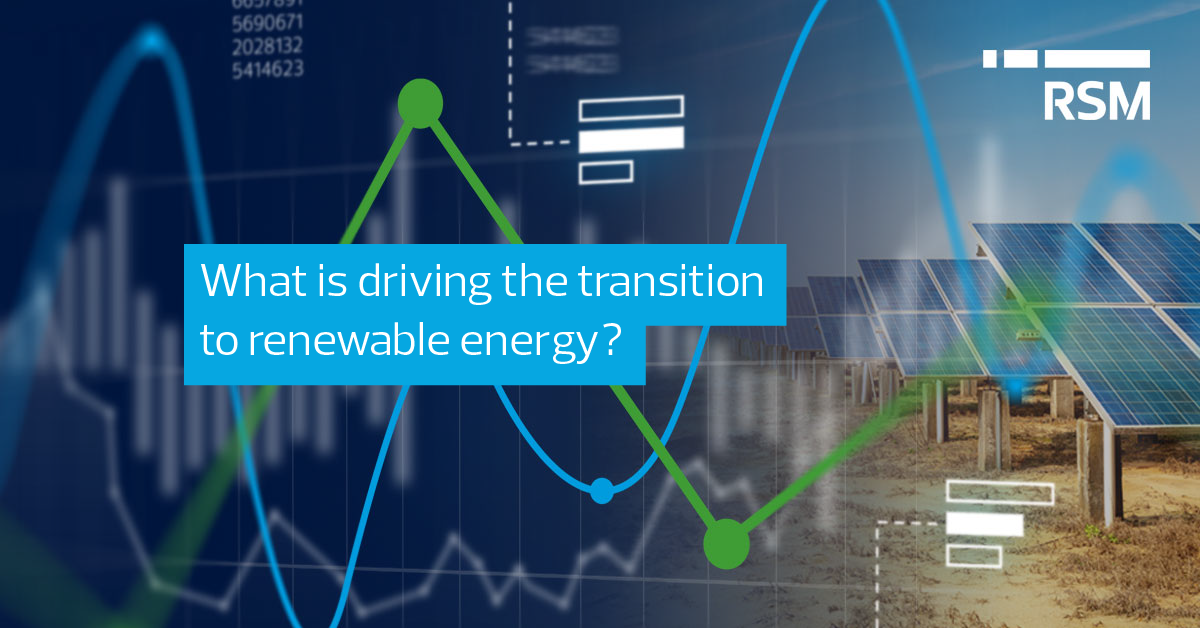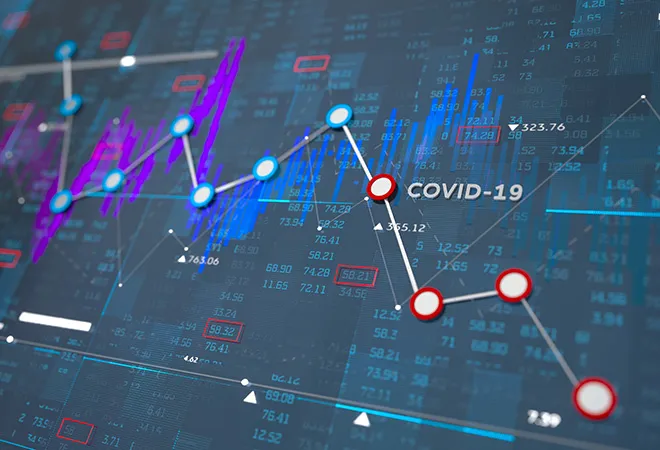
Renewable Energy Projects and the Transition Away from Fossil Fuels

As renewable energy projects contend with volatile energy markets, new regulations, and a challenging investment climate, it’s easy to lose sight of the progress being made in the transition away from fossil fuels.
Sustained investment in renewables continues, despite the hurdles, and will translate into enduring growth as economic activity becomes less dependent on fossil fuel prices and supply fluctuations.
Ultimately, as the transition accelerates and renewable electricity generation increases, economic prosperity will ensue as emissions fall.
But getting there is a challenge, driven by the push of government regulation on one side and the pull of market forces on the other.
Government Regulation and Renewable Energy
On the push side of the equation, for example, the U.S. Securities and Exchange Commission recently tightened disclosure requirements for greenhouse gas emissions. The new rules mark the latest in a series of regulations and laws, including the Inflation Reduction Act, that will cut emissions and, in the end, help increase demand for renewable energy.
Market Forces and Renewable Energy Investment
On the pull side are the market forces leading to investment in renewable energy products. Interest rate cuts in particular—likely this year—will fuel these investments, as will technological advancements.
Sustainable Development Goals (SDGs)
- Goal 7: Affordable and Clean Energy
- Goal 9: Industry, Innovation, and Infrastructure
- Goal 13: Climate Action
Substantial progress has already been made. In most developed economies, the once-tight correlation between economic growth and greenhouse gas emissions has been broken. Since 1990, emissions in the United States and the European Union have been steadily declining. Between 2005 and 2021, emissions in Canada decreased by nearly 10%. One question, now, is whether the decline will continue fast enough to meet ambitious targets on reducing carbon emissions.
But expanding the use of renewables is about more than meeting net-zero goals and seeking alternative low-cost energy sources. Some countries, after all, have little choice. For example, many countries in the EU do not have a readily available fossil fuel source, so the development of renewable energy is necessary to reduce dependency on fossil fuels and achieve energy security.
A Snapshot of Renewable Energy
Wind, hydro, and solar provided 22% of total U.S. electricity generation last year, slightly more than generated by nuclear plants, and are expected to account for almost a quarter of generation this year, according to the U.S. Energy Information Administration (EIA). Renewables’ contribution to the global electricity mix has also been climbing, with growth coming mainly from solar, followed by wind, while hydro power generation remains steady.
SDGs, Targets, and Indicators
| SDGs | Targets | Indicators |
|---|---|---|
| SDG 7: Affordable and Clean Energy | 7.2: Increase the share of renewable energy in the global energy mix | – Percentage of renewable energy in the total electricity generation – Growth rate of renewable energy capacity |
| SDG 13: Climate Action | 13.2: Integrate climate change measures into national policies, strategies, and planning | – Number of regulations and laws implemented to reduce greenhouse gas emissions – Disclosure requirements for greenhouse gas emissions |
| SDG 9: Industry, Innovation, and Infrastructure | 9.4: Upgrade infrastructure and retrofit industries to make them sustainable | – Investments in renewable energy products – Technological advancements in renewable energy |
| SDG 12: Responsible Consumption and Production | 12.2: Achieve sustainable management and efficient use of natural resources | – Reduction in greenhouse gas emissions – Decrease in fossil fuel dependency |
1. Which SDGs are addressed or connected to the issues highlighted in the article?
SDG 7: Affordable and Clean Energy
The article discusses the transition away from fossil fuels towards renewable energy sources. This aligns with SDG 7, which aims to ensure access to affordable, reliable, sustainable, and modern energy for all.
SDG 13: Climate Action
The article mentions regulations, laws, and disclosure requirements aimed at reducing greenhouse gas emissions. This relates to SDG 13, which focuses on taking urgent action to combat climate change and its impacts.
SDG 9: Industry, Innovation, and Infrastructure
The article highlights investments in renewable energy products and technological advancements. This connects to SDG 9, which aims to build resilient infrastructure, promote inclusive and sustainable industrialization, and foster innovation.
SDG 12: Responsible Consumption and Production
The article emphasizes the need to reduce dependency on fossil fuels and achieve energy security through the development of renewable energy sources. This aligns with SDG 12, which promotes sustainable consumption and production patterns.
2. What specific targets under those SDGs can be identified based on the article’s content?
Target 7.2: Increase the share of renewable energy in the global energy mix
The article mentions the growth of renewable energy generation in the United States and globally. This indicates progress towards Target 7.2 of SDG 7.
Target 13.2: Integrate climate change measures into national policies, strategies, and planning
The article discusses the implementation of regulations and laws, such as the tightening of disclosure requirements for greenhouse gas emissions. This reflects progress towards Target 13.2 of SDG 13.
Target 9.4: Upgrade infrastructure and retrofit industries to make them sustainable
The article highlights investments in renewable energy products and technological advancements. This demonstrates progress towards Target 9.4 of SDG 9.
Target 12.2: Achieve sustainable management and efficient use of natural resources
The article emphasizes the need to reduce dependency on fossil fuels and achieve energy security through the development of renewable energy sources. This aligns with Target 12.2 of SDG 12.
3. Are there any indicators mentioned or implied in the article that can be used to measure progress towards the identified targets?
The article provides indicators that can be used to measure progress towards the identified targets:
– Percentage of renewable energy in the total electricity generation: This indicator can measure progress towards Target 7.2 of SDG 7.
– Growth rate of renewable energy capacity: This indicator can also measure progress towards Target 7.2 of SDG 7.
– Number of regulations and laws implemented to reduce greenhouse gas emissions: This indicator can measure progress towards Target 13.2 of SDG 13.
– Disclosure requirements for greenhouse gas emissions: This indicator can also measure progress towards Target 13.2 of SDG 13.
– Investments in renewable energy products: This indicator can measure progress towards Target 9.4 of SDG 9.
– Technological advancements in renewable energy: This indicator can also measure progress towards Target 9.4 of SDG 9.
– Reduction in greenhouse gas emissions: This indicator can measure progress towards Target 12.2 of SDG 12.
– Decrease in fossil fuel dependency: This indicator can also measure progress towards Target 12.2 of SDG 12.
By monitoring these indicators, progress towards the identified targets can be tracked and evaluated.
SDGs, Targets, and Indicators
| SDGs | Targets | Indicators |
|---|---|---|
| SDG 7: Affordable and Clean Energy | 7.2: Increase the share of renewable energy in the global energy mix | – Percentage of renewable energy in the total electricity generation – Growth rate of renewable energy capacity |
| SDG 13: Climate Action | 13.2: Integrate climate change measures into national policies, strategies, and planning | – Number of regulations and laws implemented to reduce greenhouse gas emissions – Disclosure requirements for greenhouse gas emissions |
| SDG 9: Industry, Innovation, and Infrastructure | 9.4: Upgrade infrastructure and retrofit industries to make them sustainable | – Investments in renewable energy products – Technological advancements in renewable energy |
| SDG 12: Responsible Consumption and Production | 12.2: Achieve sustainable management and efficient use of natural resources | – Reduction in greenhouse gas emissions – Decrease in fossil fuel dependency |
Copyright: Dive into this article, curated with care by SDG Investors Inc. Our advanced AI technology searches through vast amounts of data to spotlight how we are all moving forward with the Sustainable Development Goals. While we own the rights to this content, we invite you to share it to help spread knowledge and spark action on the SDGs.
Fuente: rsmus.com

Join us, as fellow seekers of change, on a transformative journey at https://sdgtalks.ai/welcome, where you can become a member and actively contribute to shaping a brighter future.






